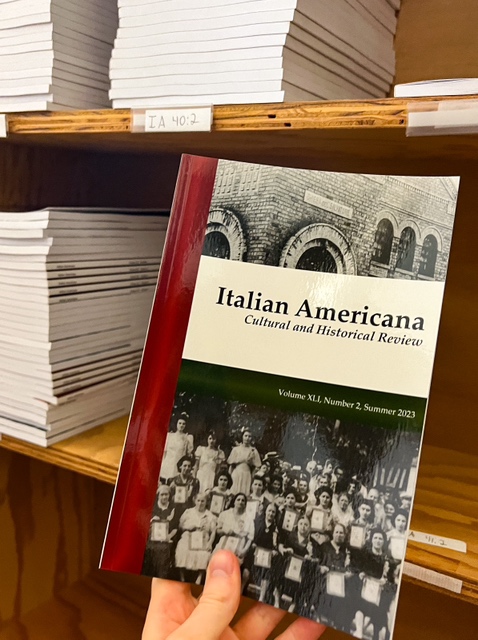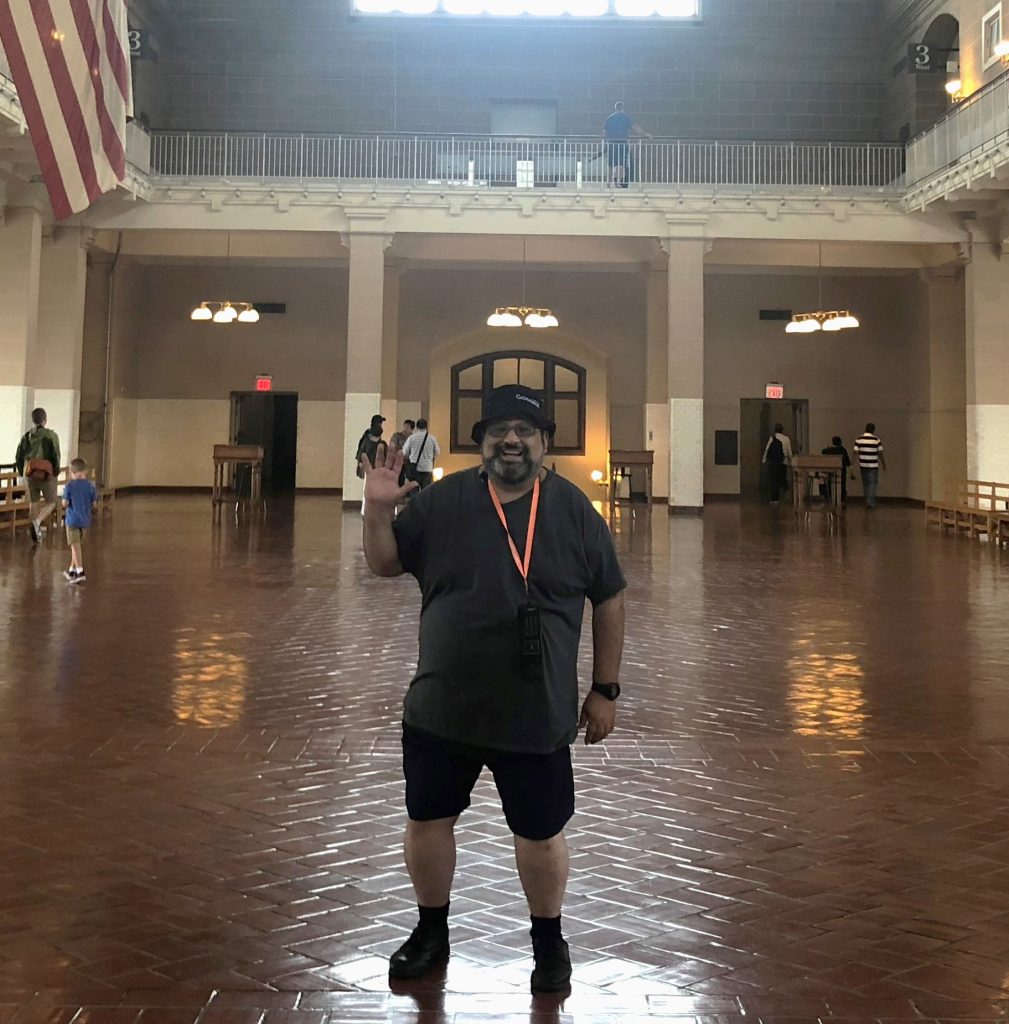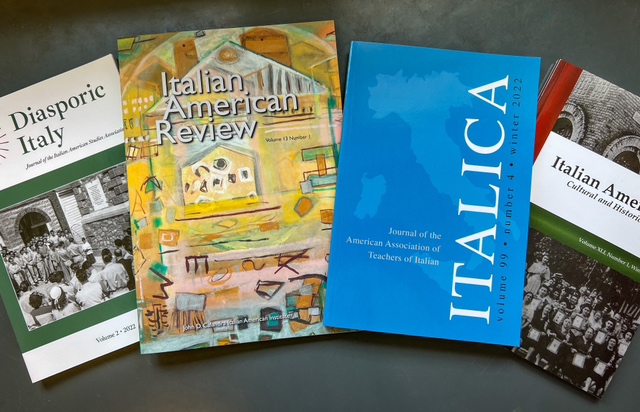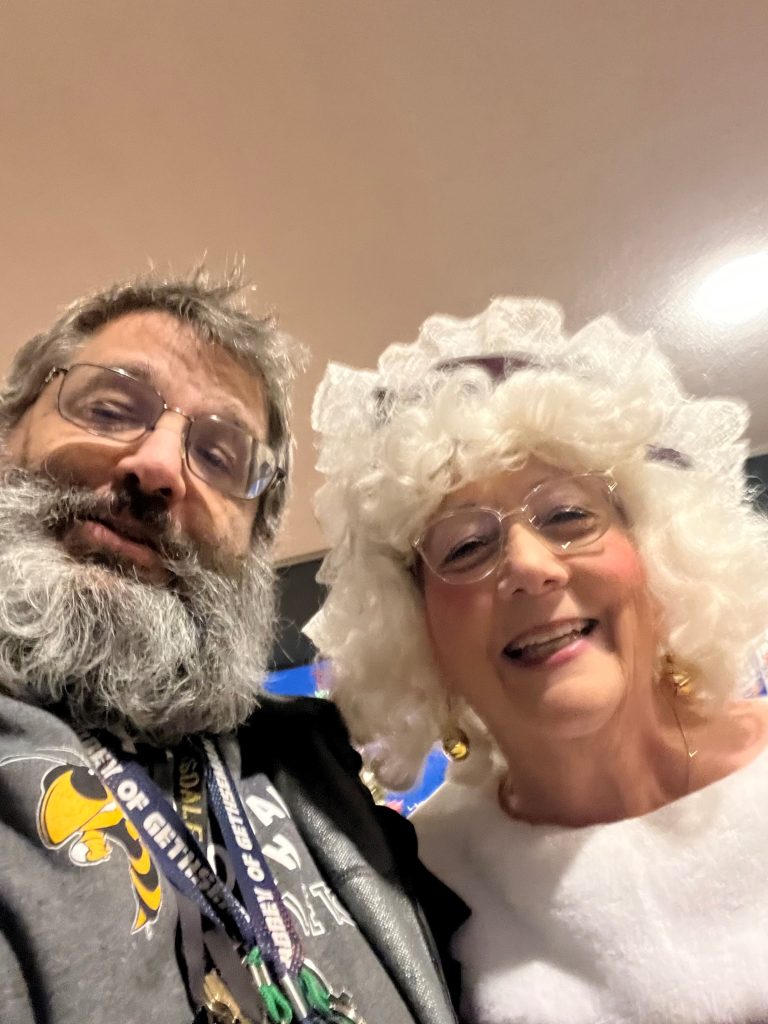
Italian Americana is a double-blind peer-reviewed journal dedicated to exploring the Italian emigrant/immigrant experience through both scholarly and creative works. Some of the creative works featured in this journal include fiction, poetry, and creative nonfiction.
Highlighted in this blog, Richard Sasso’s nonfiction piece “Becoming Italian” appeared Volume 40, Issue 2 of Italian Americana. In addition to his writing, he currently teaches English at a high school near Chicago and has been an ELL educator for almost thirty years. Sasso has worked in family literacy, citizenship/naturalization education, and adult, secondary, and higher education.
Q&A with Richard Sasso

Q: What inspired you to write “Becoming Italian”?
A: I took a writing class that asked us to write an autobiographical piece. I found the experience captivating, and it motivated me to want to do more. At the same time, I discovered that the Italian Cultural Center at Casa Italia was interested in publishing short-form autobiographical pieces. So, I expanded my assignment and reached out to them with a draft, which they liked and moved /forward on. The piece, as it appears in Italian Americana, is an excerpt of that 9+longer work, Becoming Italian: My Long Journey Home.
Q: In your piece, you discuss your family members’ experiences of immigration to the U.S. from Italy and your relationship with your Italian American roots. How do you feel these experiences have affected your work as a writer and teacher?
A: A very, very large part of my career as a teacher has been working with immigrants to America. Given my experience as a child of an immigrant, I intuitively understood much of what they were going through, although there’s always something new to learn. As a writer, I found that there were always new stories to tell about the Italian American experience as well. The story of Italian American internment during World War II is virtually unknown, especially compared to the amount of coverage of the Japanese American counterpart. I’d like to balance that out, and to examine the Italian American experience more positively as well.
Q: “Becoming Italian” also mentions your mixed feelings about inaccurate Italian American representation in media like The Godfather and The Sopranos. Do you have any books, movies, or other media that stand out to you as particularly representative of your heritage?
A: I mention in the full book that I am a huge fan of Martin Scorsese, and some of his short films, like “Italianamerican,” capture some wonderful experiences of being Italian-American. I love all Scorsese’s works, and even at their darkest, they’re fundamentally honest—if not always positive. Sebastian Maniscalco’s work is also great. His stand-up comedy in particular speaks to me.
The books of Elena Ferrante, especially her “Neapolitan Quartet,” seem to powerfully capture the unique experience of Italians from the Mezzogiorno. Their adaptations to television mini-series were the first time I ever saw anything on a screen in America approaching my own experience as an Italian American. I had never heard anyone speak in the dialect of Naples on a major American media outlet!
Q: Can you please describe your experience publishing in Italian Americana? Why do you feel like this journal is a good home for your work?
A: It was a pleasure to collaborate with the staff to publish this piece with them. They understand it is important that we continue to publish this work because they very much understand our heritage. As the saying goes, the Italian American community’s past still deserves a future! This journal understands that. They seek preserve and expand this vital part of the American experience.
Q: Do you have any other writing or projects that you’re working on, either about Italian Americans or other topics?
A: I am currently working on publishing a small piece on the history of “Pinocchio,” from the original Collodi novel to its current film iterations. I hope to expand that into a longer article on how the changes to the story reflect the way the culture Italians bring with them to America fuses with American culture to create something new. For example, the decisions Walt Disney made as he adapted the book are insightful to his vision of childhood and storytelling. But they do result in a quite different version of the tale.
I’ve also wanted to write a history of how Italian-Americans in Chicago created a whole new cuisine that you would never find in Italy but were also new to America: Italian beef sandwiches, Italian ice, deep dish pizza, and so on. It seems to be a perfect metaphor for the immigrant experience: the coming together of two cultures to create a new thing. The recent hit show “The Bear” has captured this by sharing the story of Italian beef with America.
For my part, however, the project is proving elusive. Whenever I start looking into an avenue of investigation by visiting local restaurants, I find myself having to do research by eating the best stuff on the menu—and my writing falls to wayside. But I’ll keep trying.
Excerpt from the beginning of “Becoming Italian.”
The year 2019 marked the 50th anniversary of the publication of Mario Puzo’s novel The Godfather. I remember one incident from my childhood that related to this event with utter vividness. Sometime in the late 1970s, both The Godfather and The Godfather Part II had been edited together to create an ersatz mini-series shown on network television, a sort of Italian American version of “Roots.”
On that very day, Grandpa, my mother’s father and an Italian immigrant, opened the week’s television guide to a page that featured a very large photo of Marlon Brando as Don Corleone holding a cat. “A dago, like me,” my grandfather said, smiling. At nine years of age, I had never seen the film nor had the slightest idea who Don Corleone might be, or who Marlon Brando was for that matter. I did know the word dago pretty well. Every Italian American does. It comes to you with your mother’s milk, or at least in her marinara sauce.
Standing there beside my grandfather, looking at Marlon Brando and a cat, I didn’t know what to say, so I said nothing.
For one reason or another, for many years I never saw “The Godfather” or any of its sequels. But the film was part of my life. I literally grew up eating food from a neighborhood restaurant named Sonny’s. The establishment actually had a picture of James Caan on the wall, in character, in case the reference was somehow too subtle for customers.
***
When I finally did see the films, I experienced the distinct sense of having eaten an unripe persimmon; it felt like an astringent shriveling of my tongue. And my teeth were on edge. What good can you take from an epic that depicts your people as gangsters?
Albeit, “The Godfather” series is, without a doubt, excellent filmmaking, and the films have become part of American culture and society. Just about every American who wishes to be culturally literate has watched them. Its phrases have crept into our vocabulary: “to sleep with the fishes” or “keep your friends close, but your enemies closer” and “to make them an offer they couldn’t refuse.” The images have penetrated our culture, too. For instance, a man waking up to find a horse’s head in his bed has been in an episode of “The Simpsons.” To top that all off, I heard it appears that even the remaining few members of La Cosa Nostra have appropriated phrases and tropes from the films.
***
In March 2019, while walking down the aisle at Costco, a strange shiver came over me when I saw the exact image of Don Corleone that my grandfather had shown me as a child. It was on the cover of a commemorative edition of Life magazine.
The special edition was dedicated to the impact of “The Godfather” films and the novel on American culture. I shook my head and thought: My grandfather had spent his entire life trying to become an American, but the only major image of his people he had ever been offered by America’s filmmakers was that of a murderous criminal with a perverse code of honor.
Not only for me, but also for others in the Italian American community, “The Godfather” and its sequels seemed to have elicited a range of responses from pride to shame.
***
For a long time, I possessed mixed feelings about being Italian. Nothing in my life pushed me to want to think of myself as anything other than an American, with a capital “A.” I had not one, but two Italian families. My own father as well as my mother’s father were Italian immigrants. My mother and maternal grandmother were American born, but both of my grandmother’s parents (my great-grandparents) were Italian immigrants. I certainly lived in an Italian American world, and it wasn’t anything I was particularly proud of. Somehow, in my very early adolescence, I felt distant from my relatives on all sides.
Read the full essay here.
Find Out More

- Subscribe to Italian Americana on our website.
- To recommend this title to your library, fill out this Library Request Form and provide to your library via email or in person. Many institutional libraries also have an online form you can fill out on their websites.
- Ready to see your work featured in Italian Americana? Submit your work here.
- Learn more about our other Italian Studies journals: Diasporic Italy, Italian American Review, and Italica.

